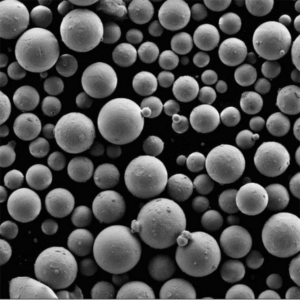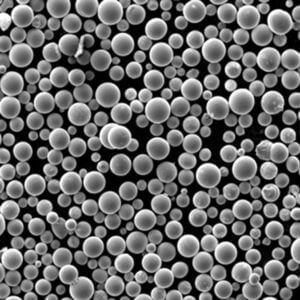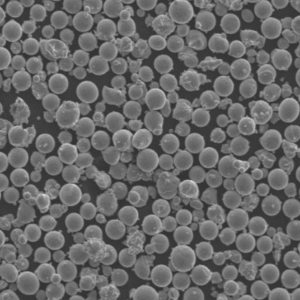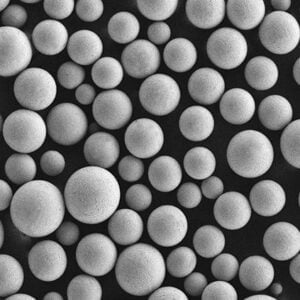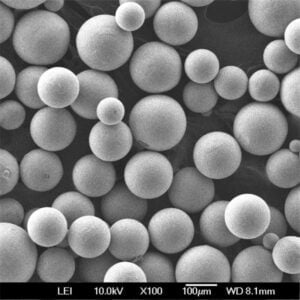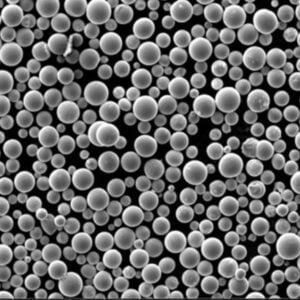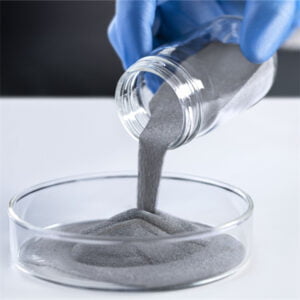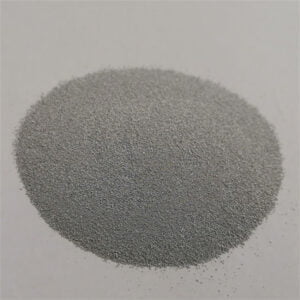Tillämpning av SLM inom området medicintekniska produkter
Innehållsförteckning
Föreställ dig en värld där intrikata medicinska apparater, perfekt skräddarsydda för enskilda patienter, tillverkas på begäran. Det här är inte science fiction; det är verkligheten med selektiv lasersmältning (SLM), en revolutionerande 3D-utskriftsteknik som förändrar framtidens hälsovård.
SLM, även känd som Laser Powder Bed Fusion (LPBF), använder en kraftfull laser för att noggrant smälta och smälta samman metallpulver lager för lager och bygga komplexa tredimensionella strukturer. Denna innovativa process låser upp en uppsjö av möjligheter att tillverka invecklade medicinska apparater med oöverträffad anpassning och funktionalitet.
Men vad är det egentligen som gör SLM till en sådan spelväxlare i det medicintekniska landskapet? Låt oss gräva djupare in i denna transformativa teknologi, utforska dess tillämpningar, de specifika metallpulver som används och den potentiella påverkan den har för framtiden för patientvård.

Tillämpningar av SLM inom medicinsk utrustning
SLM:s förmåga att skapa invecklade, lätta strukturer med biokompatibla material öppnar dörrar till ett stort utbud av medicinska applikationer. Här är några nyckelområden där SLM gör betydande framsteg:
SLM för implantat: En perfekt passform
- Ortopediska implantat: Föreställ dig en värld där höft- och knäproteser perfekt matchar en patients unika anatomi. SLM möjliggör skapandet av skräddarsydda implantat med invecklade gitterstrukturer som främjar beninväxt (osseointegration) och minskar stressavskärmning, en vanlig komplikation med traditionella implantat. Detta leder till snabbare återhämtningstider, förbättrad implantatlivslängd och en betydande minskning av revisionsoperationer.
- Kranio-maxillofaciala implantat: Efter ansiktstrauma eller omfattande operation hjälper SLM till att rekonstruera komplexa ansiktsdrag med enastående precision. Skräddarsydda kraniofaciala implantat återställer inte bara förlorad benstruktur utan ger också ett naturligt estetiskt utseende, vilket avsevärt förbättrar en patients livskvalitet.
- Tandimplantat: SLM revolutionerar tandvården genom att möjliggöra skapandet av personliga tandimplantat med överlägsen styrka och biokompatibilitet. Dessa anpassade implantat erbjuder en mer förutsägbar och bekväm lösning för patienter som söker tandersättning.
Beyond Implants: Expanding the Horizons
- Kirurgiska instrument: SLM underlättar skapandet av komplexa kirurgiska instrument med skräddarsydda funktioner och lätta konstruktioner. Föreställ dig en kirurg som använder instrument som är perfekt skräddarsydda för en specifik procedur, vilket förbättrar deras skicklighet och kirurgiska precision.
- Personlig protetik: För individer som behöver proteser erbjuder SLM en väg mot personliga lösningar. Genom att skapa proteser som perfekt matchar en patients kvarvarande lem, förbättrar SLM komfort, funktionalitet och övergripande patienttillfredsställelse.
Metal Powders: Byggstenarna för innovation
Framgången för SLM beror på de specifika metallpulver som används i tryckprocessen. Dessa pulver, med sina unika egenskaper, bestämmer den slutliga enhetens egenskaper och prestanda. Här är en närmare titt på några av de mest använda metallpulverna i medicintekniska applikationer:
| Metallpulver | Sammansättning | Fastigheter | Egenskaper | Tillämpningar |
|---|---|---|---|---|
| Titanlegering (Ti-6Al-4V) | 90% titan, 6% aluminium, 4% vanadin | Utmärkt biokompatibilitet, hög styrka-till-vikt-förhållande, bra korrosionsbeständighet | Lätt, stark, osseoledande | Ortopediska implantat (höft- och knäproteser), tandimplantat, kraniofaciala implantat |
| Kobolt-kromlegering (CoCrMo) | 60% kobolt, 25% krom, 15% molybden | Hög slitstyrka, god biokompatibilitet, utmärkta mekaniska egenskaper | Stark, slitstark, korrosionsbeständig | Höft- och knäproteser, tandrestaureringar, spinalimplantat |
| Rostfritt stål (316L) | 66% Järn, 16% Krom, 10% Nickel, 2% Molybden | Prisvärd, bra korrosionsbeständighet, måttlig styrka | Kostnadseffektiv, biokompatibel | Kirurgiska instrument, medicinsk utrustning som kräver överkomliga priser och biokompatibilitet |
| Tantalum | 100% Tantal | Utmärkt biokompatibilitet, hög radiopacitet (synlig på röntgenstrålar), bra korrosionsbeständighet | Biokompatibel, radiopak, korrosionsbeständig | Kraniofaciala implantat, tandimplantat, spinalimplantat |
| Nickel-titan (NiTi) | 55% Nickel, 45% Titan | Formminneeffekt, superelasticitet | Flexibel, tålig | Ortopediska implantat, stentar, ortodontiska ledningar |
Bortom denna tabell är flera andra metallpulver lovande för medicinska tillämpningar, inklusive:
- Magnesiumlegeringar: Biologiskt nedbrytbar, främjar benläkning, idealisk för tillfälliga implantat.
- Molybdenlegeringar: Utmärkt biokompatibilitet och korrosionsbeständighet, lämplig för långtidsimplantat.
- Ädelmetalllegeringar: Erbjuder överlägsen korrosionsbeständighet för specifika applikationer.
Att välja rätt metallpulver: en balansgång
Valet av det optimala metallpulvret för en specifik medicinsk utrustning beror på ett noggrant övervägande av flera faktorer:
- Biokompatibilitet: Materialets förmåga att samexistera i fred med människokroppen utan att orsaka negativa reaktioner är av största vikt.
- Mekaniska egenskaper: Enhetens avsedda användning dikterar dess mekaniska krav. Till exempel behöver en höftprotes exceptionell styrka och utmattningsmotstånd, medan ett kirurgiskt instrument kan prioritera lätt manövrerbarhet.
- Motståndskraft mot korrosion: Materialets förmåga att motstå kroppsvätskor och förhindra försämring är avgörande för långsiktig framgång med implantat.
- Osseointegration: För benimplantat är materialets förmåga att främja beninväxt väsentlig för ett stabilt och funktionellt implantat.
- Kostnad: Även om kostnaden inte bör vara den enda avgörande faktorn, spelar den en roll för enhetens överkomlighet och tillgänglighet.
SLM tillåter ingenjörer att utforska ett bredare utbud av metallpulver jämfört med traditionella tillverkningsmetoder. Detta öppnar dörrar för att skapa medicinsk utrustning med en unik blandning av egenskaper, perfekt skräddarsydda för att möta specifika patientbehov och medicinska utmaningar.
Fördelar och begränsningar med SLM inom medicinsk utrustning
SLM, som all teknik, har distinkta fördelar och begränsningar som måste beaktas.
Fördelar med SLM:
- Anpassning: Möjligheten att skapa patientspecifika enheter med intrikata geometrier är en spelomvandlare. Denna personalisering kan avsevärt förbättra implantatets passform, funktion och långsiktig framgång.
- Komplexa geometrier: SLM övervinner begränsningar av traditionell tillverkning genom att skapa invecklade gitterstrukturer och interna funktioner som förbättrar en enhets prestanda och biokompatibilitet.
- Lättviktsdesign: SLM möjliggör skapandet av lätta enheter med höga styrka-till-vikt-förhållanden, vilket förbättrar patientens komfort och funktionalitet, särskilt i proteser och kirurgiska instrument.
- Minskat avfall: Jämfört med traditionella subtraktiva tillverkningsmetoder som genererar betydande skrot, erbjuder SLM ett mer hållbart tillvägagångssätt med minimalt materialspill.
Begränsningar för SLM:
- Kostnad: SLM-maskiner och metallpulver kan vara dyra, vilket leder till högre initiala kostnader för enhetsproduktion. Men i takt med att tekniken mognar och användningen ökar, förväntas kostnaderna minska.
- Ytjämnhet: SLM-tillverkade delar kan uppvisa en något grövre ytfinish jämfört med traditionellt bearbetade komponenter. Emellertid kan efterbearbetningstekniker mildra denna grovhet.
- Återstående stress: SLM-processen kan införa restspänning i den tryckta delen. Korrekt designoptimering och värmebehandlingstekniker hjälper till att hantera dessa påfrestningar.
- Begränsat materialval: Även om utbudet av metallpulver som är kompatibla med SLM expanderar, är det fortfarande inte lika stort som de som är lätt tillgängliga för traditionella tillverkningstekniker.
Framtiden för SLM inom medicinsk utrustning
Framtiden för SLM inom medicintekniska produkter är full av spännande möjligheter. När forskning och utveckling fortsätter kan vi förvänta oss framsteg inom:
- Nya metallpulver: Utvecklingen av nya metallpulver med förbättrad biokompatibilitet, mekaniska egenskaper och tryckbarhet kommer att ytterligare utöka potentialen för SLM-applikationer.
- Hybrid tillverkningsteknik: Att kombinera SLM med andra tillverkningsmetoder, såsom bearbetning eller beläggning, kan skapa enheter med ännu mer sofistikerade funktioner.
- Minskade kostnader: I takt med att SLM-tekniken blir mer utbredd och produktionen skalas upp, förväntas kostnaden för SLM-tillverkade enheter minska, vilket gör dem mer tillgängliga för patienter.
- Reglerande landskap: Tillsynsorgan arbetar aktivt med att fastställa tydliga riktlinjer för SLM-producerade medicintekniska produkter, vilket främjar ökad användning och innovation.
SLM är inte bara en tillverkningsteknik; det är ett paradigmskifte i hur vi designar och skapar medicinsk utrustning. Genom att utnyttja kraften i SLM, kan vi gå mot en framtid av personlig medicin, där medicinsk utrustning är skräddarsydd för individuella behov, vilket leder till förbättrade patientresultat och högre livskvalitet.
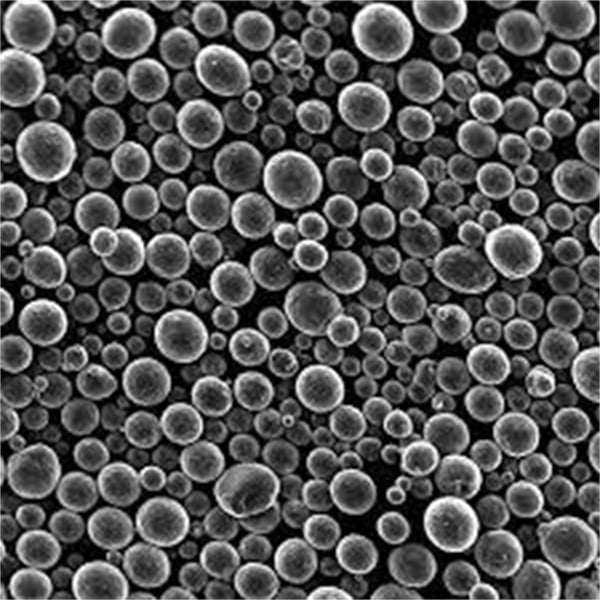
VANLIGA FRÅGOR
| Fråga | Svar |
|---|---|
| Är SLM SLM starkare än traditionella tillverkningsmetoder för medicintekniska produkter? | Styrkan hos en medicinsk apparat beror på det valda metallpulvret och dess egenskaper. SLM tillåter dock skapandet av komplexa interna strukturer som kan förbättra det totala förhållandet mellan styrka och vikt för en enhet jämfört med traditionella metoder som är beroende av bearbetning från solida block. |
| Kan SLM användas för att skapa enheter gjorda av flera material? | Inte för närvarande. SLM är begränsad till att använda ett enda metallpulver per tryckprocess. Men forskare undersöker tekniker för multi-material SLM eller kombinera SLM med andra tillverkningsmetoder för att skapa enheter med funktioner från olika material. |
| Hur lång tid tar det att skapa en medicinteknisk produkt med SLM? | Utskriftstiden beror på enhetens storlek och komplexitet. Utskriftstider kan variera från timmar till dagar. Ytterligare efterbearbetningssteg som värmebehandling och ytbehandling kan dock lägga till den totala produktionstiden. |
| Vilka är några av de största utmaningarna som hindrar den utbredda användningen av SLM i medicinsk utrustning? | Kostnaden är en viktig faktor. Dessutom är det ständiga utmaningar att säkerställa konsekvent kvalitetskontroll och utveckla ett robust regelverk för SLM-producerade enheter. |
| Är SLM en miljövänlig teknik? | Jämfört med traditionella tillverkningsmetoder som genererar betydande metallskrot, erbjuder SLM ett mer hållbart tillvägagångssätt med minimalt materialspill. Energiförbrukningen under SLM-processen måste dock beaktas för en fullständig miljöbedömning. |
Slutsats
Selektiv lasersmältning (SLM) revolutionerar det medicinska utrustningslandskapet och inleder en era av personlig medicin. Med sin förmåga att skapa intrikata, biokompatibla enheter skräddarsydda för individuella behov, har SLM en enorm potential att förbättra patientresultat och livskvalitet. Även om utmaningarna kvarstår, banar pågående framsteg inom material, teknik och regler vägen för en framtid där SLM blir en vanlig tillverkningsprocess för ett brett utbud av banbrytande medicinsk utrustning.
Dela på
MET3DP Technology Co, LTD är en ledande leverantör av lösningar för additiv tillverkning med huvudkontor i Qingdao, Kina. Vårt företag är specialiserat på 3D-utskriftsutrustning och högpresterande metallpulver för industriella tillämpningar.
Förfrågan för att få bästa pris och anpassad lösning för ditt företag!
Relaterade artiklar

Högpresterande segment för munstycksvingar: Revolutionerande turbineffektivitet med 3D-utskrift i metall
Läs mer "Om Met3DP
Senaste uppdateringen
Vår produkt
KONTAKTA OSS
Har du några frågor? Skicka oss meddelande nu! Vi kommer att betjäna din begäran med ett helt team efter att ha fått ditt meddelande.

Metallpulver för 3D-printing och additiv tillverkning
FÖRETAG
PRODUKT
cONTACT INFO
- Qingdao City, Shandong, Kina
- [email protected]
- [email protected]
- +86 19116340731






